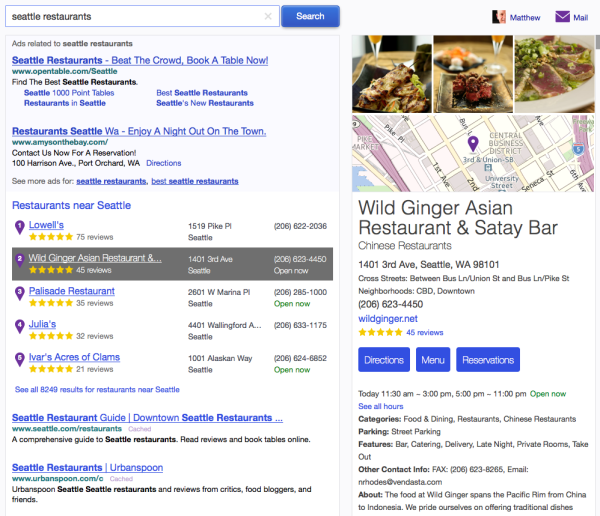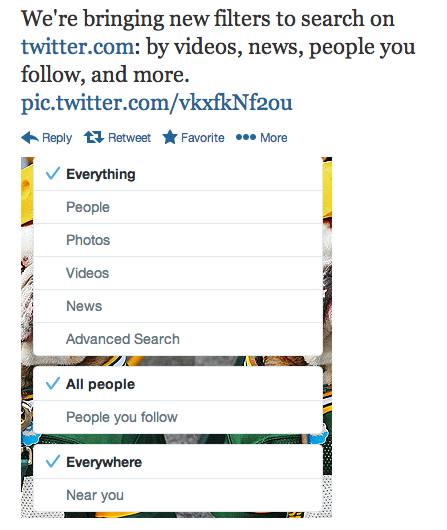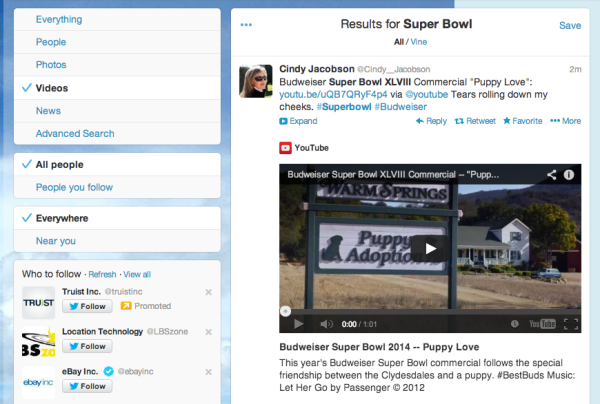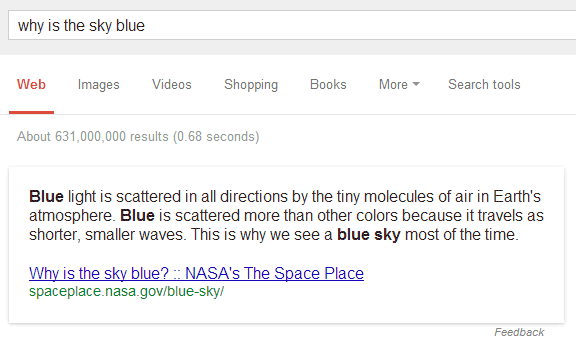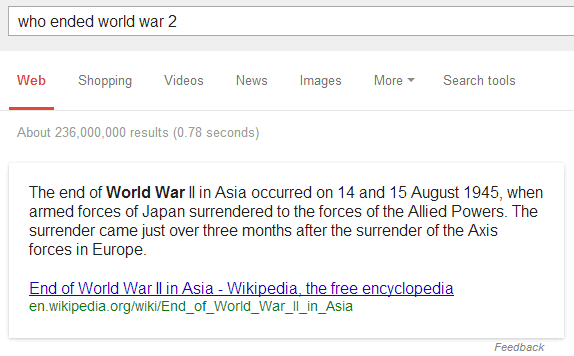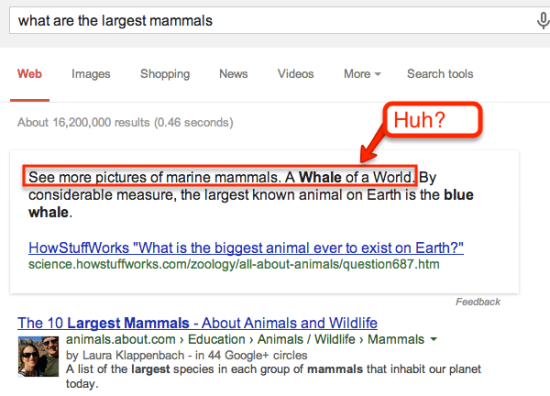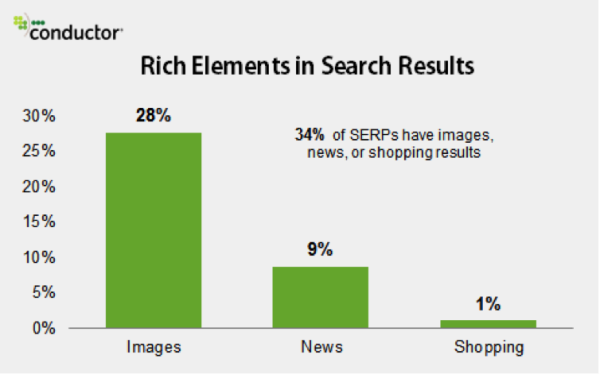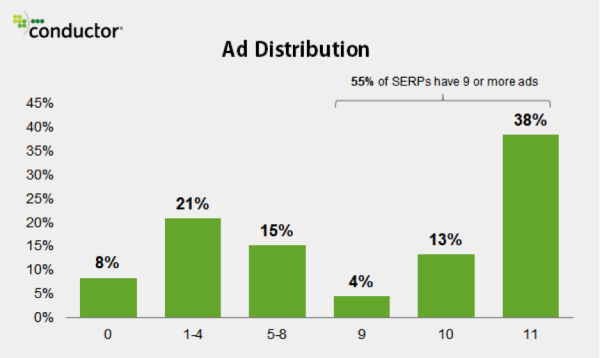In the weeks leading up to game day, several Super Bowl advertisers have been employing paid search to help ensure their campaigns are found by the legions of users searching for “Super Bowl ads”. While the majority of Super Bowl advertisers still aren’t taking to SEM, those that are have been displaying some interesting tactics that are worth a look.
Here are five trends we’ve noticed from the Super Bowl advertiser ads currently running on Google and the Yahoo Bing Network.
1.YouTube is King
All but one advertiser in the examples below link to YouTube in their ads on “super bowl” related queries, and even that lone advertiser links to YouTube when advertising on its own hashtag. As BusinessWeek noted, YouTube has become a Super Bowl goldmine for Google. Not only do advertisers drive huge volumes of traffic to the site, but they run ads on YouTube to attract even more viewers to their Super Bowl ads spots on the site.
2. Sitelinks Extend Real Estate For Top Advertiser
Many advertisers are using sitelinks (now part of the Google’s Ad Rank formula), yet Bud Light is also the only advertiser with ads routinely showing all four sitelinks. Bud Light is running multiple ads during the game and is using sitelinks to give users quick access to each ad on YouTube.

Bud Light also appears to be the most active advertiser, so far, with paid search ads appearing steadily on Google and the Yahoo Bing Network.
3. Hashtags Come To PPC
Bud Light is incorporating its campaign hashtag #Upforwhatever in its PPC ads. And, Toyota, which had been running ads for its teaser (as shown from Google) below with a link to YouTube, has launched is now promoting the full ad in PPC (shown from Yahoo below). The new ads incorporate the campaign hashtag #Unbornify, which was not used on the teaser.

 4. Extending Engagement With Sitelinks To Social Media
4. Extending Engagement With Sitelinks To Social Media
A handful of advertisers are also using sitelinks to drive users to their brands’ social media profiles.
In Toyota’s #Unbornify ad shown above the company has added sitelinks to its Facebook, Google Plus and Twitter profiles. While it’s unusual to see so many social networks included in one ad, this approach gives users the option to connect with the brand where they want to (and Toyota has instilled the hashtag in users’ minds no matter where they land).
In addition, all three of Toyota’s social media profiles linked to from the ads have been updated with the Super Bowl ad branding.

Nestle’s Butterfinger brand’s choice of links in its PPC ads also is interesting. It is using two sitelinks, one to the Facebook profile and the other to the teaser ad on YouTube. The main link, however, goes to the landing site for the new Butterfinger Cups product being promoted. Users can watch the teaser on the landing page.

Note, the campaign hashtag is #CupTherapy, but is not being used by the brand in the ads or in any of its posts on Facebook.
5. Only Occasional Use of Brand Landing Pages
Most advertisers are driving users to watch their ads on YouTube, the viral measure of record. Yet, in addition to Butterfinger, AXE is another stand out example of advertisers using their own landing pages. In fact, AXE is gives users no other sitelink options in its “Make Love, Not War.” Super Bowl PPC ads.

The AXE Peace landing page features a link to the powerful and sweet Super Bowl ad (shown below), but more prominently the landing page features a promotion for the #KissForPeace contest in which consumers are asked to post their kissing pics to Twitter with the hashtag for the chance to have their photo featured on a billboard in Times Square.
The current photo submissions are aggregated on the landing page, powered by digital agency Ideation.
It’s somewhat curious why the hashtag is not being used in the PPC ads as well. However, the brand is buying ads on both the Yahoo Bing Network and Google for “KissForPeace”. In these ads the main link is still the AXE Peace landing page, but they also include sitelinks to both Facebook and, yes, YouTube.

And looking at YouTube, the ad has struck a chord. The 60 second spot went up on January 14 and already has more than 3.1 million views. #KissForPeace has been tweeted nearly 1,500 times according to TweetReach.
http://youtu.be/63b4O_2HCYM
Other advertisers running paid search ads for “super bowl ad” queries include Audi, Volkswagen and Coca-Cola. Each of these advertisers simply link to their ads on YouTube. Volkswagen is at least teasing up its ad’s concept in its ad copy, “Explore what happens with a VW hits 100,000 miles”.

Let us know in the comments below if you spot other advertisers using paid search in interesting ways to promote their Super Bowl ad campaigns.

